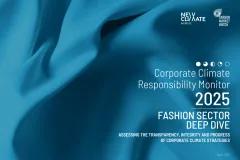Research by NewClimate Institute assesses the co-benefits achieved by the INDCs of the EU, China and the U.S., and reaffirms that taking more action faster has significant co-benefits.
In March, countries began to submit their Intended Nationally Determined Contributions (INDCs) for the new international climate change agreement, which is expected to be agreed at the 21st Conference of Parties in Paris in December 2015. Analysis of INDC preparations worldwide show that a second wave of these proposed national contributions should be expected by June, with a third larger wave coming in September.
In their INDCs, countries set out their proposed national targets and goals for domestic climate action after 2020. For some countries, this may be in the form of economy-wide or sectoral greenhouse gas emission reduction targets, whilst in others it may be a programme of intended policies or individual actions. Some countries are also including efforts to adapt to the inevitable impacts of climate change, while others focus solely on strategies to reduce the carbon footprint of their economies.
Countries are expected to present contributions that are as ambitious as their national circumstances allow. A key consideration and constraint in this context is the perceived upfront costs associated with transitioning to a low carbon economy, including the gradual depreciating of unsustainable industries which often occupy a central position in a country’s economic and political climate.
However, all too often, climate change mitigation ambition potential is stymied by cost-benefit analyses that neglect to consult a thorough consideration of the latter component - the benefits. Such benefits include reduced dependence on fossil fuel imports and improved energy security, health impacts from air pollution reduction and safer working environments, the generation of sustainable and decent jobs, and the protection of local ecosystem services upon which many local economies are enormously dependant.
An increasing volume of research from recent years demonstrates how a more serious consideration of the co-benefits of climate change mitigation action can bring down the perceived costs considerably, and even generate positive economy-wide returns.
In this context, NewClimate Institute - with the support of the Climate Action Network (CAN) - has undertaken an illustrative analysis of the co-benefits associated with selected INDCs. In particular, the INDCs of the EU, as well as the anticipated contribution from the U.A. and China based on their announcement in November 2014, have been assessed. The assessments include illustrative indications of the cost savings associated with reduced fossil fuel imports, the reduction in premature deaths associated with reduced air pollution, and the generation of green jobs in the renewable energy sector.
The co-benefits achieved by these INDCs in 2030 compared to the trajectory implied by current policies, is indicated in Table 1. Specifically, the INDCs of these countries combined may produce over 1 million additional full-time equivalent jobs by 2030, and prevent over 100,000 premature deaths annually.
Table 1: Co-benefits achieved by INDCs in 2030 compared to current policies trajectories
| Co-benefit | EU | US | China |
| Cost savings from reduced fossil fuel imports | USD 33 billion per year saved | Reduced reliance on scarce, domestically produced fuels | Reduce reliance on scarce domestically produced coal by 21% |
| Premature deaths from excessive ambient exposure to fine particulate matter prevented | 6,000 deaths | 7,000 deaths | 100,000 deaths |
| Creation of additional green jobs in wind, solar and hydro energy | 70,000 jobs | 470,000 jobs | 500,000 jobs |
The proposals put forward by these three countries are a step towards meeting the internationally agreed goal to limit the global temperature increase to +2°C but are not yet sufficient. For example, the Climate Action Tracker reported that the proposals of these countries would constitute an improvement of 0.2 to 0.4 °C but still imply a trajectory that results in warming in the region of 2.9°C – 3.1°C.
The study demonstrates the scale of co-benefits that could be achieved if countries were to increase the ambition of their INDCs, in order to meet a trajectory that is consistent with the 2°C goal. Table 2 summarises this potential, which is in addition to the co-benefits that would be achieved by the INDCs as presented by governments. These additional benefits are much larger than those achieved by the INDCs. Combined, these three countries could save costs of over USD 500 billion in fossil fuel imports each year, prevent the premature deaths of over 1 million people anually, and generate nearly 2 million additional full-time equivalent green and decent jobs.
Table 2: Potential additional co-benefits in 2030 from strengthening INDCs to meet a 2°C compatible trajectory
| Co-benefit | EU | US | China |
| Cost savings from reduced fossil fuel imports | USD 140 billion per year saved | USD 160 billion per year saved | USD 190 billion per year saved |
| Premature deaths from excessive ambient exposure to fine particulate matter prevented | 40,000 deaths | 20,000 deaths | 1.1 million deaths |
| Creation of additional green jobs in the wind, solar and hydro energy | 350,000 jobs | 180,000 jobs | 1.4 million jobs |
Recognition of both the achieved and potential co-benefits may increase the willingness of decision makers and influential stakeholders to embark on more ambition climate action strategies by highlighting the tangible synergies between mitigation measures and national development goals. Ultimately, a more thorough analysis and consideration of the potential benefits associated with more ambitious climate action in individual countries might demonstrate that the achievement of a 2°C compatible trajectory does not only preserve the well-being of future generations, but may also generate positive economy-wide returns, rather than costs for the current generation.
Download the full report for further details and methodological considerations.







